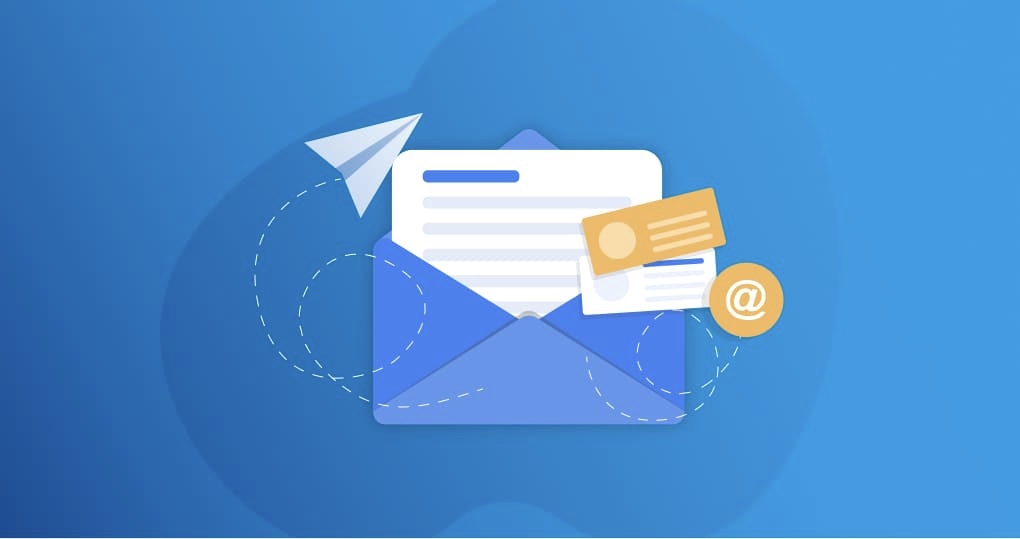
It’s no surprise that many businesses are transitioning to a custom email domain. With the rise in cyber security threats and data breaches, companies want more control over their organization’s communication channels to boost their brand credibility.
If you started your business using free email services like Gmail, Yahoo, or Outlook and you’re now looking to have your own custom email architecture for improved
- Professionalism
- Branding
- Control
- Security
- Data ownership and
- Customizations
Then, here are three tips to help you make a smooth and successful transition.
Make the Necessary Preparations
Transitioning to a custom email domain (especially when your clients are used to your current email address) requires careful planning. The last thing you want is your clients blocking your new email address out of fear of being scammed or cyberbullied.
This is why, before making the switch, you have to ensure you’ve:
Identified Your Goals
Before transitioning to your new custom email address, you must identify your primary objectives and ask yourself some fundamental questions to help guide your decisions.
- Are you looking to enhance your brand’s professionalism, improve security, or streamline marketing efforts?
- Do you want a custom email domain for personal use or your business?
- Do you plan to keep using your existing email address while transitioning to the new domain?
These are some of the questions you should be asking. Once you have a clear vision of your objectives by answering these questions, you can start planning the technical implementation.
Chosen a Domain Name
Selecting the right domain name is another important decision you’ll have to make when transitioning. You have to understand that your domain name is not just a “name.” It’s also the digital identity of your organization. Perhaps why you should make sure it’s:
- Relevant
- Unique
- Short and memorable
In terms of relevance, you have to ensure that whatever domain name you choose is appropriate for your personal or business identity and reflects your brand, niche, or industry.
Plus, it should have some elements of your current email address (so your clients can easily recognize and memorize it) while maintaining its uniqueness.
Tested the Transition
Before making the transition official, conduct tests to ensure everything works perfectly. The last thing you want is to email your clients or contacts and find out after a long time that some didn’t receive it.
This mistake can cost you time and resources, and if you’re a business, you may lose some clients.
This is why you must conduct several tests on your new custom email to observe its functionality and send test emails to verify deliverability before communicating it to your clients.
Developed a Communication Plan
Once your new email is up and running, the next and perhaps most important step is communicating the transition to your clients, contacts, and team members. To handle this effectively, you’ll need a communication plan.
While you’re in the best position to know what plan to use in communicating your transition, a good suggestion would be to send an announcement email to your existing clients, informing them of your new custom email and encouraging them to update their address books.
Next, you need to work on all your platforms to ensure they reflect the new email address. If you have a website, update the contact information section.
Also, update all your social media handles so they carry the new custom email, and configure email forwarding from your former email address to your new one to avoid missing emails sent to your old address. Consider using an email client to organize your multiple accounts during this stage.
Choose a Good Email Hosting Provider
Another area where you’d want to be extra careful is when selecting an email host provider. Hosting providers differ in their services and features, so you want to make sure you choose one that aligns with your business or personal needs.
The ideal hosting provider should be able to guarantee the security of your emails with features like encryption, spam filtering, and two-factor authentication. It should also be able to provide you with 24/7 uptime.
The last thing you want is a hosting provider that occasionally experiences downtime; this can make you miss opportunities and lose customers. To prevent choosing a hosting provider with this issue, ensure you check for client reviews before deciding.
Monitor and Make Adjustments
After the transition, you have to keep an eye out for email deliverability rates to ensure your emails are getting to their intended destination. If there are any issues, address them immediately. Other areas you’d want to monitor are:
Security
Regularly review your email security measures to avoid potential threats or vulnerabilities.
Functionality
Monitor how your emails are being delivered to other free email services like Gmail and Outlook. Observe if recipients receive your mail directly to their primary inbox or if it’s sent to their spam folder.
This should give you an idea of the extra efforts and adjustments needed to ensure your clients or contacts see your emails whenever you send them.
Feedback
Ask for feedback from your clients and team members regularly regarding their experience with the new email system, and use their input to make improvements where necessary.
Wrapping Up
As you transition to a custom email, make it a priority to include your clients, contacts, or team members in your plans.
They are the primary reason you are making these changes, so do well to carry them along and use the advice on this blog to make the best decisions to ensure a smooth transition.
Interesting Related Article: “How Email Marketing Helps Build Relationships and Drive Sales Online“
